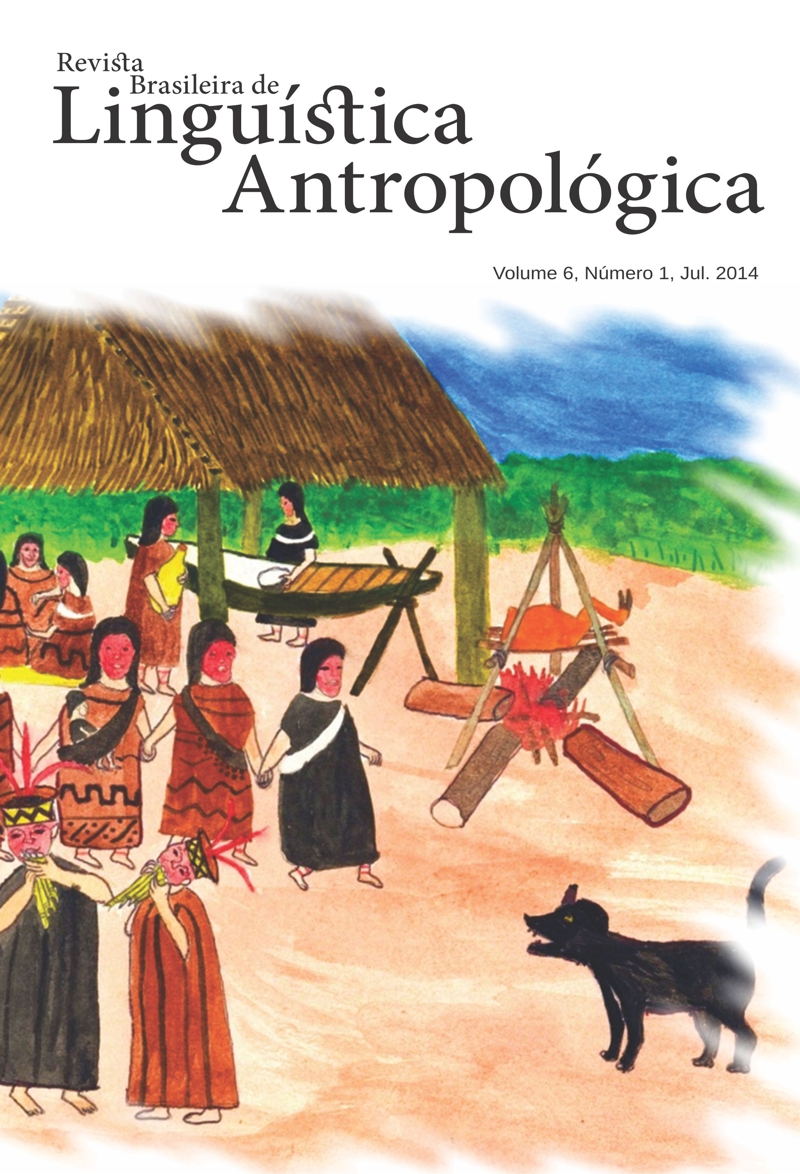Nominal classifiers in three Amazonian Indigenous languages of Brazil: enhancing typologies
DOI:
https://doi.org/10.26512/rbla.v6i1.21063Keywords:
Nominal classifiers. Cultural basis. Metaphoric meanings. Mehináku, Suruí and Nahukwá-Kalapálo.Abstract
We describe three nominal classifier systems present in three Brazilian Indigenous languages ”“ Mehináku (Aruakan family), Nahukwá-Kalapálo (Karibean family), and e Suruí (spoken by the Paitér éy) (Mondé family, Tupian stock). Except for Mehináku, some aspects of which have been described by Mori (2005, 2007, 2012), the other two systems are described here for the first time, and together highlight particular characteristics of classifiers systems that have not yet been considered in previous descriptive, comparative or typological studies on the Tupian and Karibean families.
References
Cabral, Ana Suelly A. C.; Suruí, Uraan; Tupari, Raul; Isidoro, Edineia. Classificadores em línguas Tupí de Rondônia, em uma perspectiva diacrônica (Em preparação)
Corbera Mori, Ángel H. 2005 “A posse nominal em línguas Arawak do sul e Arawak central: uma abordagem descritiva”. Estudos Linguísticos 43(1), pp. 236-268.
______. 2007. Aspectos da estrutura nominal em Mehináku (Arawák). Estudos Lingüísticos (São Paulo), v. 1, pp. 249-257.
______. 2012. Waurá e Mehináku: um breve estudo comparativo. Estudos Linguísticos (São Paulo. 1978), v. 41, pp. 196-205.
Crofts, M. 1973. Gramática Mundurukú. Brasília: SIL.
______. 1985. Aspectos da Língua Mundurukú. Brasília: SIL.
Derbyshire, Desmond. 1999. Carib. In Dixon, R. M. W. and Aikhenwald, A. (eds.), The Amazonian Languages, pp. 23-64. Cambridge: Cambridge University Press.
Everett, D. 2012. Language: the cultural tool. New York: Pantheon Books.
Franchetto, B. 1995. Processos fonológicos em kuikúro: uma visão auto-segmental. In Leo Wetzels (org.). Estudos fonológicos das línguas indígenas brasileiras, pp. 53-84. Rio de Janeiro: Editora UFRJ.
Gabas Jr., N. 1999. A Grammar of Karo (Tupi, Brazil), Ph.D. dissertation, University of California, UEA.
Gomes. D. M. 2006. Estudo Morfológico e sintático da Língua Mundurukú (Tupí). Tese de Doutorado, Universidade de Brasília.
Grinevald, Colette. 2000. A morphosyntactic typology of classifiers. In: Systems of Nominal Classsification, Ed. Gunter Senft, Cambridge: Cambridge University Press. pp. 93-113.
Grinevald, Colette. 2002. Making sense of nominal classification systems. Noun classifiers and grammaticalization variable. In: Ilse Wischer & Gabriele Diewald (Eds.). New reflections on Grammaticalization. Series: Typological studies in language, Vol. 49. Amsterdam/Philadelphia, John Benjamins B. V., pp. 259-275.
Grinevald, Colette; Frank Seifart. 2004. Noun Classes in African and Amazonian languages: towards a comparison. Linguistic typology n° 8, n° 2 , pp. 243-285.
Santos, Gélsama Mara Ferreira dos. 2007. Morfologia Kuikuro: Gerando nome e verbos. Tese de Doutorado, Universidade Federal do Rio de Janeiro.
Downloads
Published
Issue
Section
License

This work is licensed under a Creative Commons Attribution 4.0 International License.
Authors who publish in RBLA agree to the following terms:
a) Authors maintain the copyright and grant the journal the right of first publication, and the work is simultaneously licensed under the Creative Commons Attribution License, which allows the sharing of the work with recognition of the authorship of the work and initial publication in this journal.
b) Authors are authorized to assume additional contracts separately, for non-exclusive distribution of the version of the work published in this journal (eg, publish in an institutional repository or as a book chapter), with recognition of authorship and initial publication in this journal.
c) Authors are allowed and encouraged to publish their work online (eg, in institutional repositories or on their personal page) at any point before or during the editorial process, as this can generate productive changes, as well as increase impact and citation of the published work.










